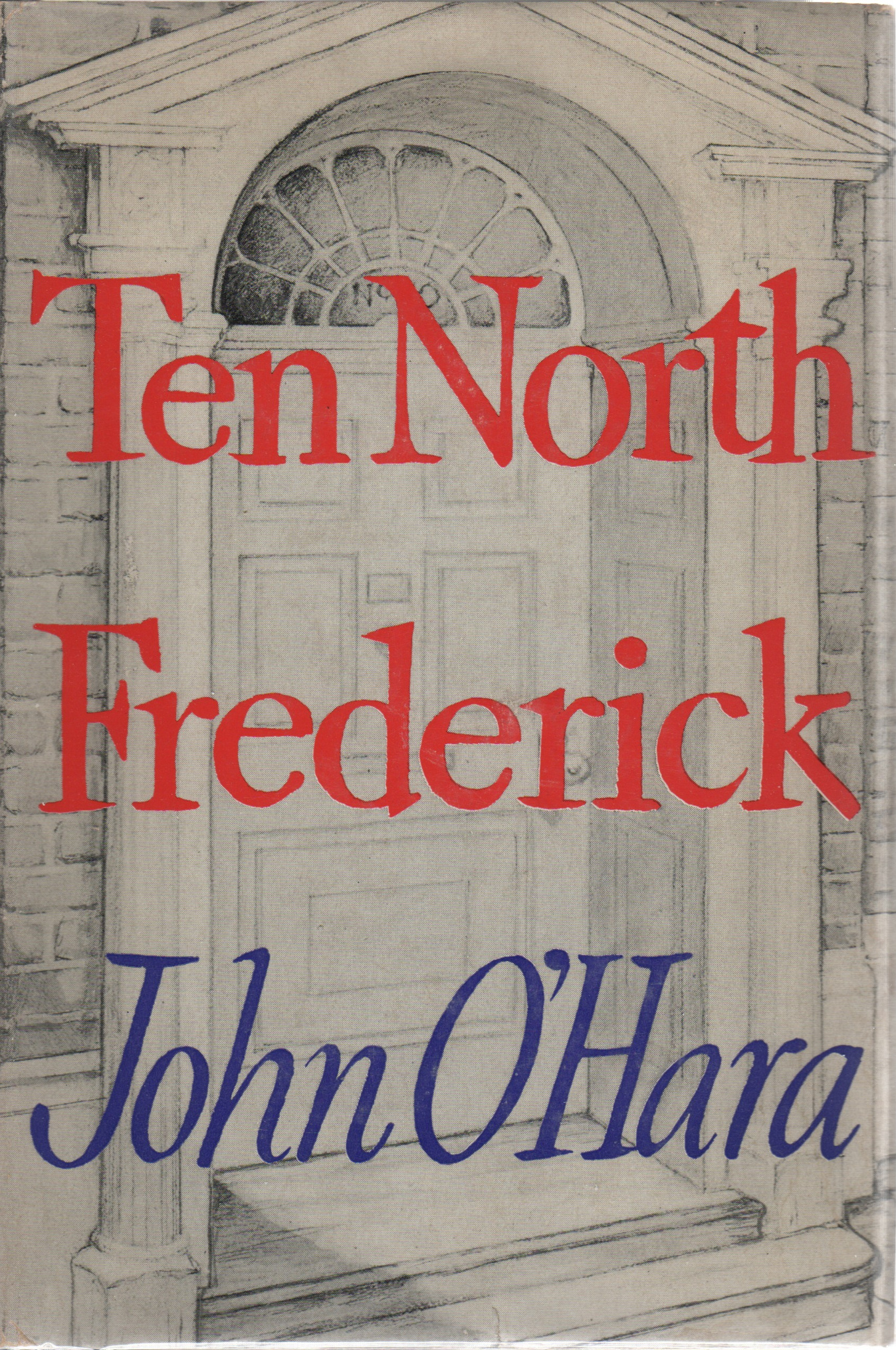408 pages
Published Nov. 12, 1955 by Random House.

408 pages
Published Nov. 12, 1955 by Random House.
Ten North Frederick, John O'Hara's first major novel since A Rage to Live in 1949, is the story of a family of the "best people," who live in the "best" old section of Gibbsville, Pennsylvania.
Benjamin Chapin and his wife Charlotte lived out their lives in the fine, substantial house at 10 North Frederick after their marriage in 1881. When their only son, Joseph Benjamin, married Edith Stokes in 1909, the young couple came to live there, too, and their children, Ann and Joseph Benjamin, Jr., were born there. When Joseph B. Chapin died in 1945, his parents were long since dead, and the house was Edith's alone.
All three generations of the Chapin family are portrayed with an intimacy and an uncompromising clarity perhaps unparal-leled in modern fiction, except in Appointment in Samarra and A Rage to Live, by the same author. The chief emphasis is on …
Ten North Frederick, John O'Hara's first major novel since A Rage to Live in 1949, is the story of a family of the "best people," who live in the "best" old section of Gibbsville, Pennsylvania.
Benjamin Chapin and his wife Charlotte lived out their lives in the fine, substantial house at 10 North Frederick after their marriage in 1881. When their only son, Joseph Benjamin, married Edith Stokes in 1909, the young couple came to live there, too, and their children, Ann and Joseph Benjamin, Jr., were born there. When Joseph B. Chapin died in 1945, his parents were long since dead, and the house was Edith's alone.
All three generations of the Chapin family are portrayed with an intimacy and an uncompromising clarity perhaps unparal-leled in modern fiction, except in Appointment in Samarra and A Rage to Live, by the same author. The chief emphasis is on the middle generation, on Joseph B. Chapin, who begins his career with some knowledge of his own limitations but is led into trying to exceed them. Readers of this book will know Joseph B. Chapin better than they know most people in real life.
But not only do the Chapins, who are important people in Gibbsville, come vividly to life in this story; the community itself and many of its other citizens at all levels of the social ladder are full-bodied creations, too, and while what they do and say to each other is frequently shocking, it is always believable.